In 10 days time, I have had 111 QSOs with:
- 18 countries
- 12 CQ zones
- 13 ITU zones
- 5 continents
- 31 states
All this mostly on 40 meters on a homemade dipole (which isn’t that great!) at 20 watts.
Who knew that HF could be THAT kind of fun?

In 10 days time, I have had 111 QSOs with:
All this mostly on 40 meters on a homemade dipole (which isn’t that great!) at 20 watts.
Who knew that HF could be THAT kind of fun?
In this article, we will explore a relatively inexpensive digipeater solution to extend the range of a private WinLink Express network. The growth of our local WinLink Express network has demanded that we extend the range, in at least two directions, for new users to be able to access the Linbpq BBS system that is the host for the system.
After a bit of research, we found that to create a digipeater node we would need the following components:
We were successful in getting the prototype system to work properly. The cost of the system, however, was a bit high because we want to be able to expand our network at lower overall cost per node. So we set about to see how we could reduce the cost without reducing the reliability of the system. We surmized that we could reduce the cost by doing three things:
A second prototype was constructed using the three ideas above. The result of this article (and the others in this series) fully describe this second prototype.
The second prototype consists of:
A Motorola CDM 1250 VHF radio.
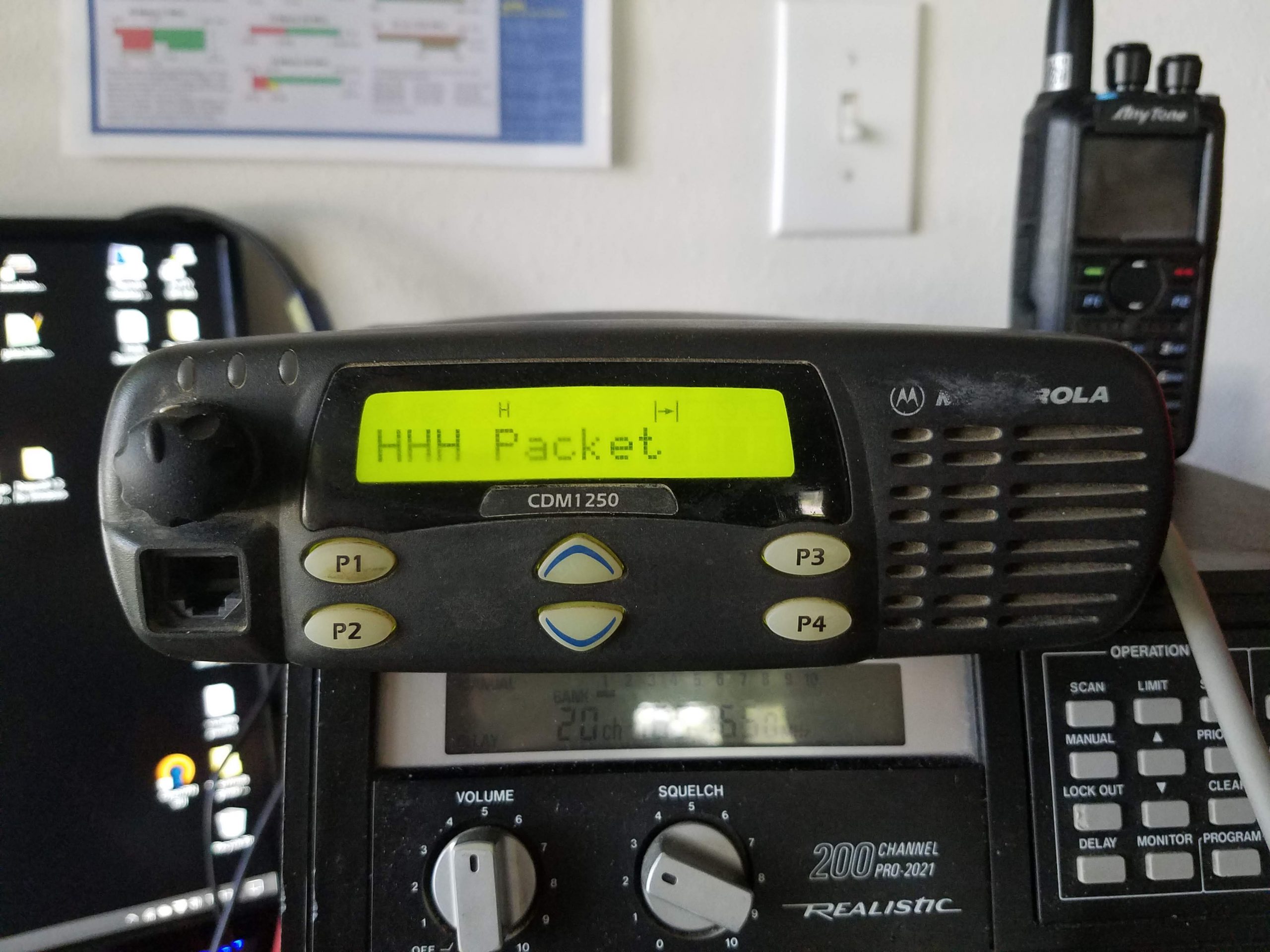
The one I used I had purchased at the Collinsville IL hamfest for $25. Ebay has them too but the prices will be somewhat higher (closer to $100). This radio can be programmed with a USB serial cable and the appropriate programming cable if you can’t find someone to help you with it. (https://www.ebay.com/sch/i.html?_from=R40&_trksid=p2380057.m570.l1312&_nkw=motorola+cdm+vhf&_sacat=0)
A RepeaterBuilder RIM-Maxtrac USB Soundcard
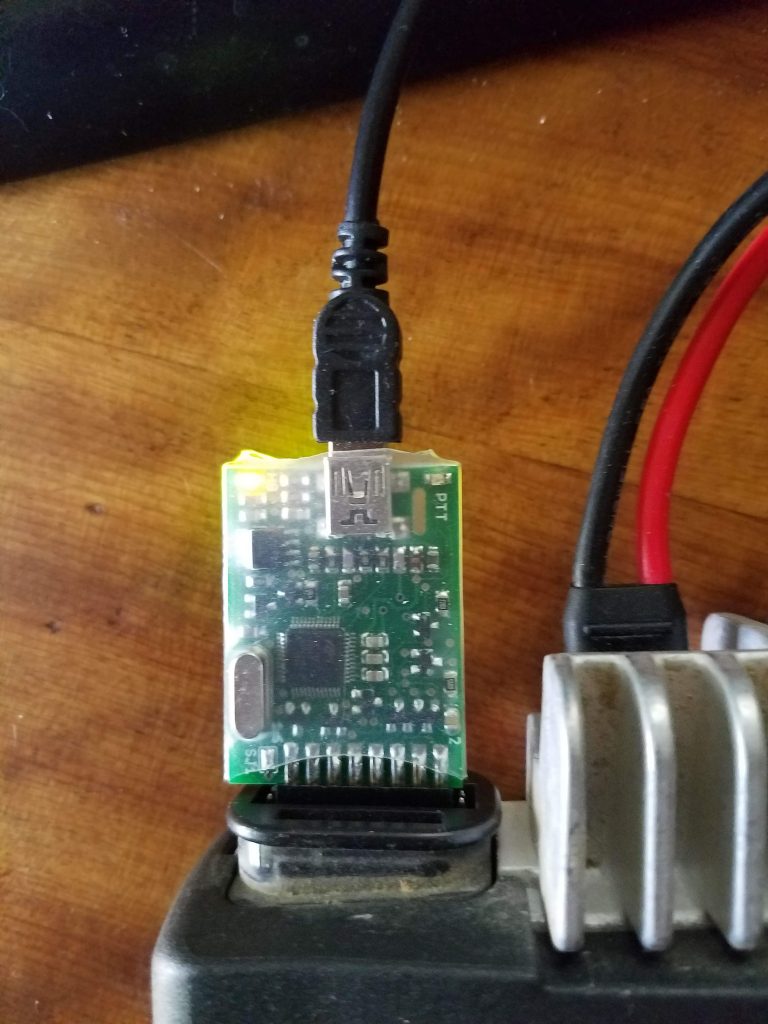
I picked this one because it interfaces directly to the accessory port on the Motorola CDM radio above. I have used multiple of these interfaces and they are well built and reasonably inexpensive, about $50 at the time of this writing. (http://www.repeater-builder.com/products/usb-rim-lite.html)
A Raspberry Pi Zero W with case and memory card.
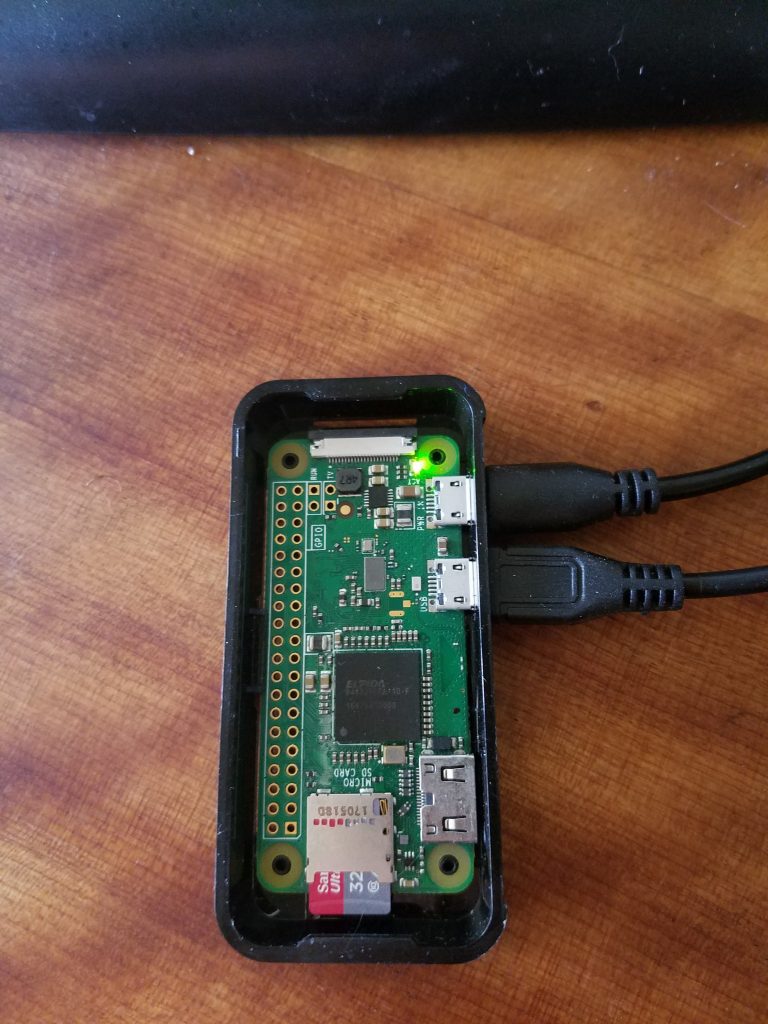
(https://www.adafruit.com/product/3409)
A Power Supply for the Pi Zero W
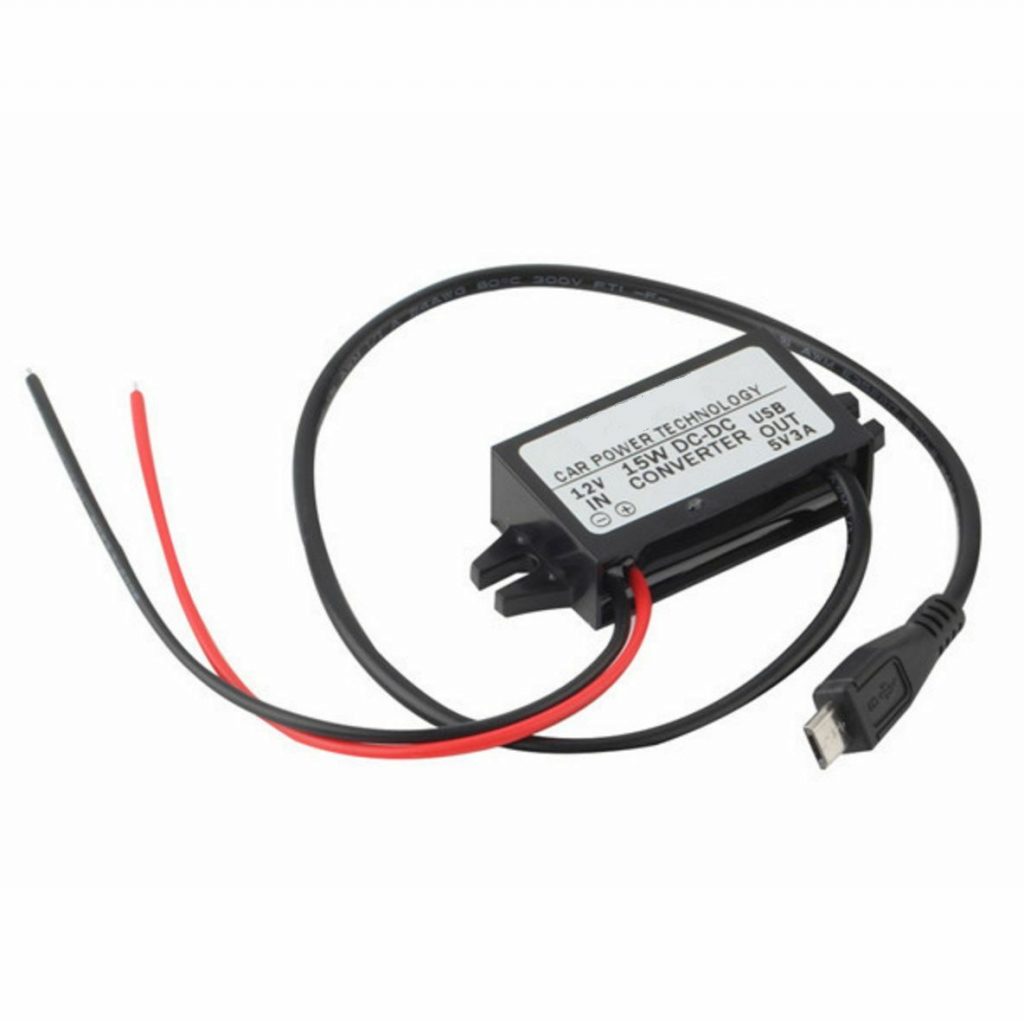
I used a 5 volt wall wart to power the Pi for testing purposes, but the Pi could be powered by a 12 volt to 5 volt converter such as the one pictured above. This would be especially useful since the radio is likely to need a 12 volt power source anyway. (https://www.ebay.com/itm/Car-Charger-DC-Converter-Module-12V-To-5V-3A-15W-with-Micro-USB-Cable/151573577463?hash=item234a7d3ef7:g:lvAAAOSwAuZX5buT)
A Micro USB OTG cable.
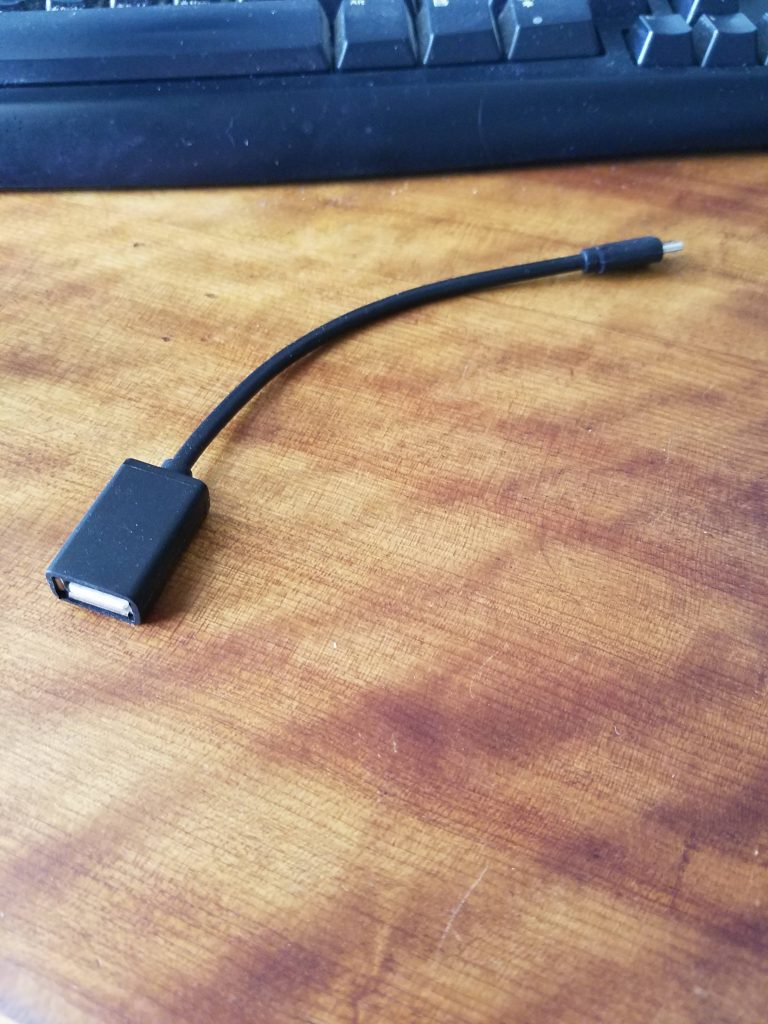
You’ll need this to connect the soundcard to the Pi Zero W. Here’s a link to an example. (https://www.ebay.com/itm/Micro-USB-B-Male-to-USB-2-0-A-Female-OTG-Adapter-Converter-Cable-LG-Samsung-Sony/312836633094?hash=item48d6843206:g:LrAAAOSwmXtdxMvi)
Miscellaneous
Of course I had a 12 volt power supply for the radio, and I used my main station’s dual band antenna for testing.
Project Costs
The total cost of the second prototype system comes out like this: $25 for the radio, $50 for the sound card, $25 for the Pi, $7 for the power adapter and $3 for the OTG cable. Allow another $20 for miscellaneous cables. That brings the total for our second prototype to $130. Granted, you may not be able to buy a Motorola CDM radio for the $25 bargain I got, but even if you had to pay $100 for one, the total cost would still only be $205. That a worthwhile savings over the total cost of about $315 of our first approach. As always, your mileage may vary.
Join us for part two of this series in which we’ll discuss assembly of the Inexpensive Digi and the software that makes it all work!
It seems like it’s been forever since I’ve posted here. I guess in some ways, that’s a good thing because since the middle of last December, I’ve been incredibly busy!
The biggest thing that caused my busyness is that I got a job. A job that I can work from right here at home. That allows me to continue to take care of M and be here to know what’s going on. I KNOW this gift came from God and, dear Lord, I cannot thank you enough!
Beyond the job, I also got elected to be President of the local Ham Club of which I am a member. My term was up in August and I got re-elected. I care a lot about the club, but I keep thinking that I might be stretching myself too thin.
Regardless, here I am with October on the doorstep. The job is going well. The club is moving forward, and I haven’t focused much on the things I WANT to do for me. One of those things is building a repeater here in Owensville. Rick Gehlert and I decided a while back that we would do that and acquired all the requisite components. Rick is kinda stove up right now, so there’s no better time than now. We’ll be starting the construction this week and I think we’ll have it operational pretty quickly!
Of course, I have been optimistic about my projects before and my hopes have been dashed. But maybe with Rick on board, we’ll bring this one to fruition pretty quickly.
Wish us luck!
It’s hard to believe that my last post here was back in November of last year! Well, I’ve been just a little bit busy! I’ll tell you about it all, but probably not this evening. I’ve expended my energy quota for the day!
Thanks for caring. I’ll get back with you all soon!
Bill

Commodore Grace M. Hopper, USN (covered).
This week, President Obama awarded the Presidential Medal of Freedom to some very deserving people. Mostly in the news, all you heard about were the Hollywood celebrities and musical artists, but I’ll bet the news never mentioned Rear Admiral Grace Hopper. Admiral Hopper was a fundamental contributor in the early days of computing, one of the first software programmers on the Mark 1 computer at Harvard and is credited with coining the term “bug”. She was one of the first advocates for machine independent programming languages contributing heavily to the creation and development of the COBOL programming language.
Admiral Hopper received her award posthumously as she passed away on January 1st, 1992. In her wake, she left a bustling computer industry, and a world so much better off for her presence in it.
I had the very great pleasure of meeting Admiral Hopper when I worked for Digital Equipment Corporation. She was a senior consultant for the company and was lively, interesting and a true delight to meet. I used to have one of her nanoseconds but I’ve lost it across the years since then. I, for one, will never forget her!
Below is a YouTube video of her appearance on Late Night with David Letterman. Enjoy!
Ok, so I had built an AllStar Link node before (two actually, see some previous posts here) and I was feeling all great about myself and stuff. I proposed to the club that we purchase a Raspberry Pi 3, a RIM Lite interface and with these things, we could build a new repeater controller for the 2 meter repeater. Having had a fair amount of experience with a Raspberry Pi before, and some experience with a RIM Lite module, I thought to myself, “I got this!”
Well, not so much!
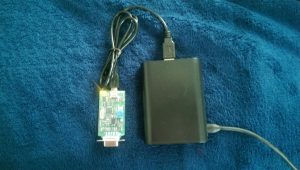
Doesn’t look like much, does it? But it sure had me pulling out my very sparse hair over the weekend!
If you’re still reading along, I’ll try to BRIEFLY recount the issues I had and the lessons I learned.
LESSON 1: Make sure you’re working with good hardware!
Actually, I tried to do this first. I thought before I got too involved, I should at least test the new Raspberry Pi 3 and make sure it wasn’t faulty in some way. So I assembled the pieces; the Pi, the case, the power cube and the USB cable that connects the power cube to the Pi (minus the RIM Lite at this point). Now get a micro SD card, and load some software on it, insert it into the Pi’s card slot, and let ‘er rip! Simple, right? Well…. the basic image downloaded from the Raspberry Pi distribution site didn’t seem to be very stable. It would lock up and misbehave in all sorts of ways. I found this very confusing because my prior experience with the software from that site has shown it to be nearly bulletproof! So what could be wrong? I tried a few different software images and found similar results: no matter what I did, it seemed like I had a flaky Pi. In addition, I couldn’t seem to get the on board WiFi adapter working at all. Color me very confused at this point!
LESSON 2: Quit gnashing your teeth and listen to the experiences of others!
Ok, so, in fear of grinding my teeth down to smaller nubs than they already are and rather than lose more hair than I already had, I decided to start searching for answers on the Internet. (Who knows more than the Internet does? PLEASE stop laughing now!!) After a few hours of searching, I really didn’t find anything that I thought was specific to my particular issues. But I did start to realize that there was a nagging underlying issue in what I was reading of other folks problems. It seems that many of them were having power related issues, mostly due to the fact that the Pi 3 requires more power than the previous Pi’s in the series. My first thought was, how could this be a problem for me? Surely the supplier sent a power cube that is powerful enough to manage all that the Pi could require! Didn’t they? I mean, I can trust them, right? Ummm.. well…. errr… grrr! So I decided to power the Pi from a powered USB hub that I have. Surely it would put out enough power. I plugged it all up with the Pi and the USB cable that came with the Pi, and still, no joy! Still flaky, still unreliable, still confounded and now a little depressed.
And I think that at this point, God realized that I was probably going to either burst a blood vessel, or have a major meltdown, neither of which would be good for me, nor for Auntie M, so a new idea fluttered through my mind. I’d already eliminated the power cube, and I was trying to ensure the board itself was good. The only thing left to try to replace was the USB cable that had been sent in the package. Feeling very skeptical that this could be the problem, I found another USB cable with the right connectors and pulled out the one they had sent in the package. Shaking my head back and forth just knowing this couldn’t be the problem, I plugged it all up again, with the cable I had from before. Plugged into my local Ethernet, I logged in and decided I’d do something that had always locked it up before. I asked the on board WiFi to scan for all WiFi networks it could see. When I saw that it actually had done it and returned this nice very verbose list of everything it could see, I nearly peed my pants. (I’m sorry, I know that’s probably a visual you really didn’t need, but somehow it felt right while I was writing this.) So after I contained my joy, (and checked my pants), I tried a few other things and no matter what, I couldn’t make the little Pi 3 board fall over into a comatose state!
LESSON 3: Try, if you can, to make smart choices about the software you are using!
Feeling bold now that I had figured out the instability issue, I once again said to myself, “Now, I’ve got this!” (I know, in retrospect, I should have known I was headed for disaster again!) There were several distribution images that have AllStar Link on top of Linux for the Raspberry Pi. If that doesn’t sound complicated enough, there are different distributions with different versions of Asterisk (the software that AllStar Link is based upon), some of which are RPi 2 compatible and some of which are RPi 3 compatible. Yep, you guessed it, I tried four of them before I found one that seemed to work and also supported the on board WiFi adapter on the Pi 3. Then I realized that the one that worked, was based on a different distribution of Linux than the ones that are currently supported by AllStar Link (the organization!). SMH!!! Really? Come on!!! Sighhhh!!!!
Wouldn’t you think that it would be a LOT easier than this? I sure did! At this point I had spent most of a week getting to this point, and it was late on Saturday night, so I decided that before my brain melted down again, I should really get some sleep.
LESSON 4: Distance yourself from the problem to solve the problem!
Sometimes, distance gives you insight! This must actually be one of my most favorite lessons, because I seem to need to keep learning it over and over and over again! Time and distance gave me enough insight to go look closely at the place where the DIAL distributions came from and when I did, voila!! There, buried on a low lying, nondescript technical page (actually the MAIN page), I found a link to a release candidate for the NEXT version of DIAL on Raspberry Pi! WOW! How did I miss this before? (If you’ve been following along, you already know the answer to that!) But this, THIS is exactly what I’m looking for!
Alright, so, download, write to memory card, install in Pi, reboot! Viola, right? I’m SURE you know by now what’s coming next!
LESSON 5: You STILL don’t know all you think you know!
Alright, it comes up and everything LOOKS ok. I start poking around and it connects to the Ethernet just fine. But I know that where this is going to end up, we need it to connect on WiFi. So I start, with my STILL limited Raspberry Pi 3 knowledge, poking at it to try to get it to connect seamlessly on WiFi. I try this, and I try that, relying of course on my EXTENSIVE knowledge of Raspberry Pi’s… Yep, you guessed it! What I thought I knew worked before and should be easy, just isn’t working anything like that any more!
So back to the wonderful world of answers, the Internet! Of course, there aren’t always DEFINITIVE answers… well maybe there are if you know the EXACT RIGHT THING TO ASK! Of course, I didn’t, but after digging my way through a dozen or more likely and many more unlikely answers, I finally figure out that the NEW version of the Pi software requires a different way of making the networking stuff work right. Well, DUH! Yes, once again in retrospect, I should have realized that there was something amiss that I still needed to learn. But would my ego get there right away? Nooooooooooo!!
LESSON LAST: Be thankful for all that you have learned!
So, now it’s Sunday evening. I’ve spent nearly a full week, getting to the point where I have a reliable, functional AllStar Link node that we can use as our repeater controller. I am thankful that I’ve gone through all that I have this week because I personally have several more of these controllers to build. At least one more will likely be for the club’s 440 repeater, and there will be at least two more for repeater projects that will reside here in or around Owensville, MO.
Despite all my failings this week, I think it’s time I rewarded myself with a nice cold scotch, and some good food. And as I speak here, the scotch is already cold, and I’ll be making tacos tonight because I LOVE tacos!
Despite all my raving in this post, I hope you will all go away with the knowledge that I LOVE TECHNOLOGY and the challenges that it brings! Long live the Internet, and long live projects that can keep my attention and desire to succeed as well as this one has!
Thanks for reading along! If you’ve made it this far, you are truly amazing! 😉
At the September 8th meeting of the Sullivan Amateur Radio Club, I gave a presentation about AllStar Link and the changeover of our EchoLink node to AllStar Link. You can view the Powerpoint presentation at the link below:
http://wshiggins.net/sarc-allstar-link-presentation-09082016/
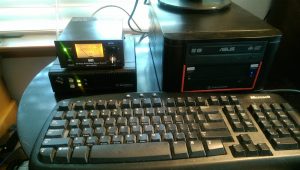 Ok, so a few posts ago, I lamented about how EchoLink was sorta boring. And because I felt that way, I undertook a project to evolve my traditional Windows based EchoLink node to an AllStarLink node (with an EchoLink channel!)
Ok, so a few posts ago, I lamented about how EchoLink was sorta boring. And because I felt that way, I undertook a project to evolve my traditional Windows based EchoLink node to an AllStarLink node (with an EchoLink channel!)
Well, after a couple of weeks of learning AllStarLink, and sorting out a malfunctioning interface module, it’s finally up and running and by all accounts it sounds really great! And before I go any further, I want to give my sincere thanks to Scott Zimmerman (N3XCC) of Repeater-Builder fame who built and supplied the modules I used and for his help in sorting out the bad module. Scott is a great guy and a stand-up businessman and I would highly recommend his products! I used the RIM-Maxtrac-RM (correction: I used the RB_RIM_Maxtrac interface! Thanks Scott!) version of his line which can be found at http://www.repeater-builder.com/products/usb-rim-lite.html . This module has a 16 pin connector that plugs directly onto the back of the Motorola Maxtrac radio that I was using for the EchoLink node. A picture of this module can be seen on the left below and as the lower left image and the middle image of the 5 images at the top of Scott’s product page. 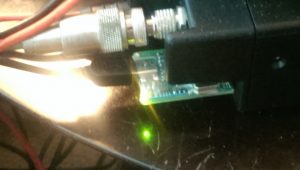 The module provides a nice, compact audio and control interface to the computer in a single USB connection. I used the most recent DIAL image for installing AllStarLink on the computer, and was actually up and running fairly quickly (if you take out the time we spent sorting out the bad module.)
The module provides a nice, compact audio and control interface to the computer in a single USB connection. I used the most recent DIAL image for installing AllStarLink on the computer, and was actually up and running fairly quickly (if you take out the time we spent sorting out the bad module.)
I’m really quite amazed at the flexibility and programmable control one can have using the AllStarLink system. It’s designed to be a full fledged repeater controller and repeater linking system. The default audio quality AllStarLink uses is quite a bit better than I imagined. Even the EchoLink connections sound better to me than they did before! As a bonus, the streaming audio feed for the repeater to which the radio is tuned now originates directly out of the AllStarLink node. The quality improvement of this alone made the entire project worthwhile!
I invite you to check out the node if you like! On AllStarLink it is node number 43758 and on EchoLink it is still node N0NOE-R (407714.) The radio is tuned to the input and output frequencies of the Sullivan Amateur Radio Club 2 meter repeater which is located in West Sullivan, MO and is on 146.805 Mhz.
I’m really not sure I understand. Why is it that when I think I have the real lowdown on things I always get tripped up? It’s been happening all week and I don’t know how to stop it. I hope that someone has figured this out and has some good advice…
The EchoLink node has been up and running well for quite a while now. You might ask, why would you want to change anything about it?
Well, to be honest, it’s kinda boring! Yeah, it works, and it’s providing a service. We have a few people who use it fairly regularly. The truth is that it’s somewhat limited though, and I’ve been researching a somewhat newer technology called Allstar Link.
The nice thing about Allstar Link is that it would allow for linking with any other Allstar Link node, it would continue to provide EchoLink access to the club’s repeater and it provides several alternative methods to connect to the node itself. It can even be a complete repeater controller in itself, a use that I intend to explore in another separate project in the very near future.
So today, I ordered the interface I need to connect to the existing EchoLink radio. I already have a testing Allstar Link node up and running and have connected to it from virtually every IP based device I own. When the interface comes in, I’ll move the radio from the existing EchoLink computer to the Allstar Link computer and we’ll just have us some new Allstar Link fun! Hopefully, it’ll sound as good as the current setup.